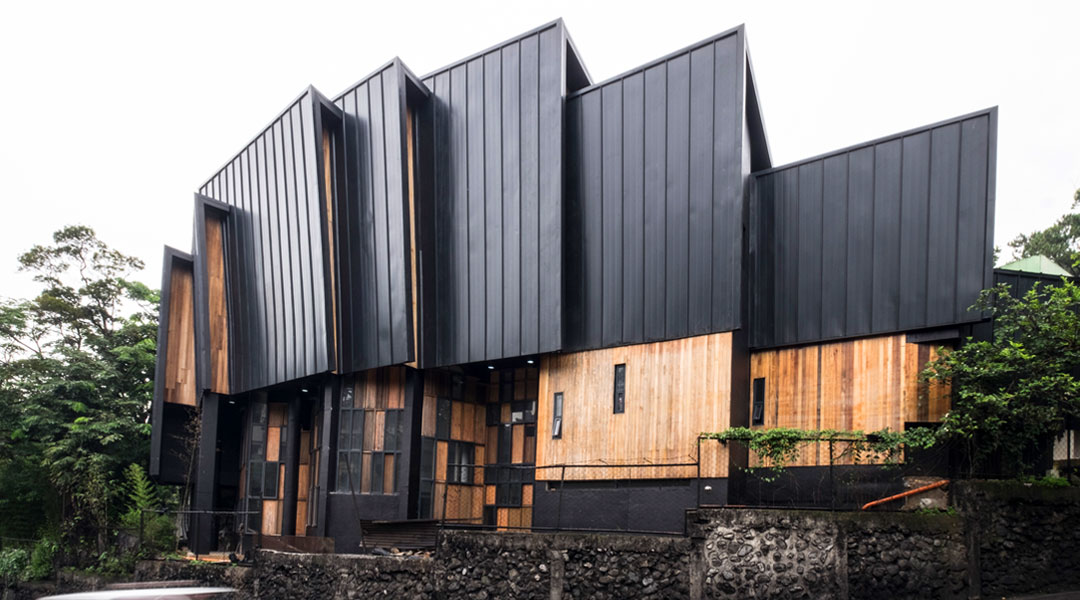
90 Design Studio explores abstract past forms in UP Baguio Teatro Amianan
When the Chancellor of University of the Philippines (UP) Baguio called up 90 Design Studio to design a spate of new campus facilities, the university wanted world-class buildings. Aris Go, the principal of Baguio-based 90 Design Studio, was quick to retort the rhetoric and, instead, be more pragmatic given the limited budget: to maximize utility and space in addition to fulfilling the client’s aspirations and needs while enhancing the existing campus experience. To paraphrase, the firm’s explorative creative process is “one that involves the abstraction of past forms present in local culture as an attempt to create new forms” in order to “encourage critical thinking in the state of culture and architecture in Baguio City.”
Opened in February 2018, Teatro Amianan represents the latest component in an ongoing masterplan to transform the campus—the others being the Agham Laboratories (opened December 2016), Museo Kordilyera (opened January 2017), and the Cultural Hub building (under construction), to name a few. Dubbed a ‘micro theater’ by the architect, the building is situated at the southern end of a steep six-hectare terrain. In a tight corner between the UP Baguio Library, the College of Arts and Communication (CAC) building, and the meandering one-way thoroughfare of Governor Pack Road, a kinking, organic form rises and falls.
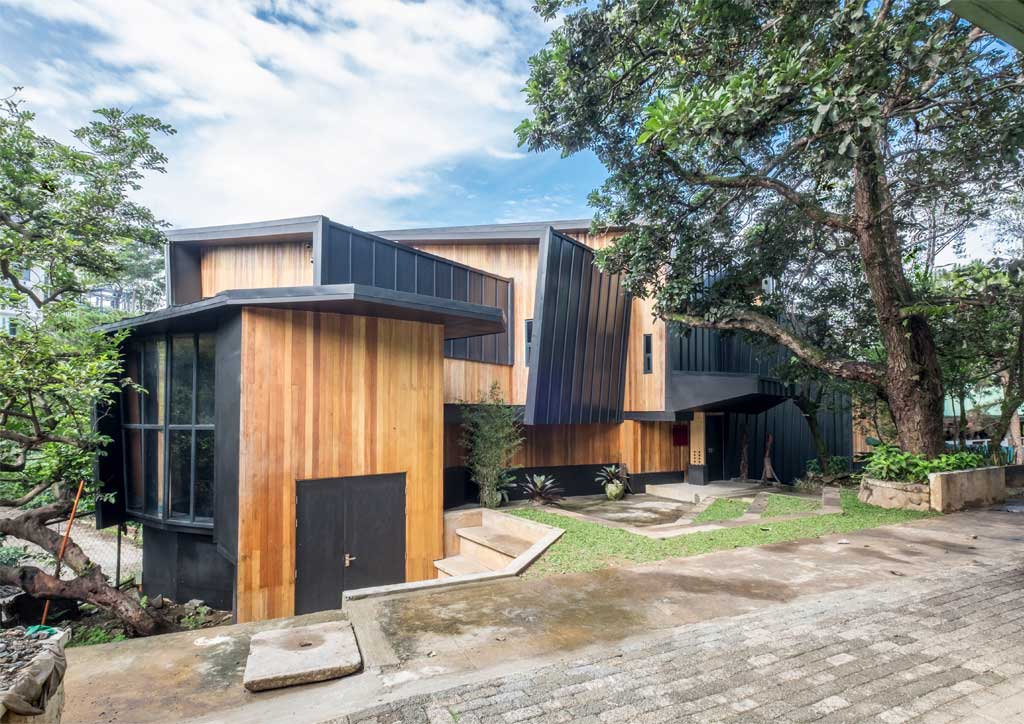
Previously, the site was no less than a mess: a small shed for fine arts and sculpture showed its age; a curved concrete hollow block wall which faced stepped rows was hardly an amphitheater; a steep concrete ramp traversing the entire site saw many slip up on come rainfall; and, a small garden was underused and overgrown. Existing avocado, langka, Gmelina trees, as well as large plants were kept and provided the starting point for the studio’s remolding of the hotchpotch site into a new open space fronting the theater.
READ MORE: Square one: Malcolm Square rehab breathes new life into Baguio
The design is heavily centered around two strategies: the creation of a new accessible, public realm as a glue between the theater and its neighboring campus buildings, and the elements needed for the interior environment of the building itself.
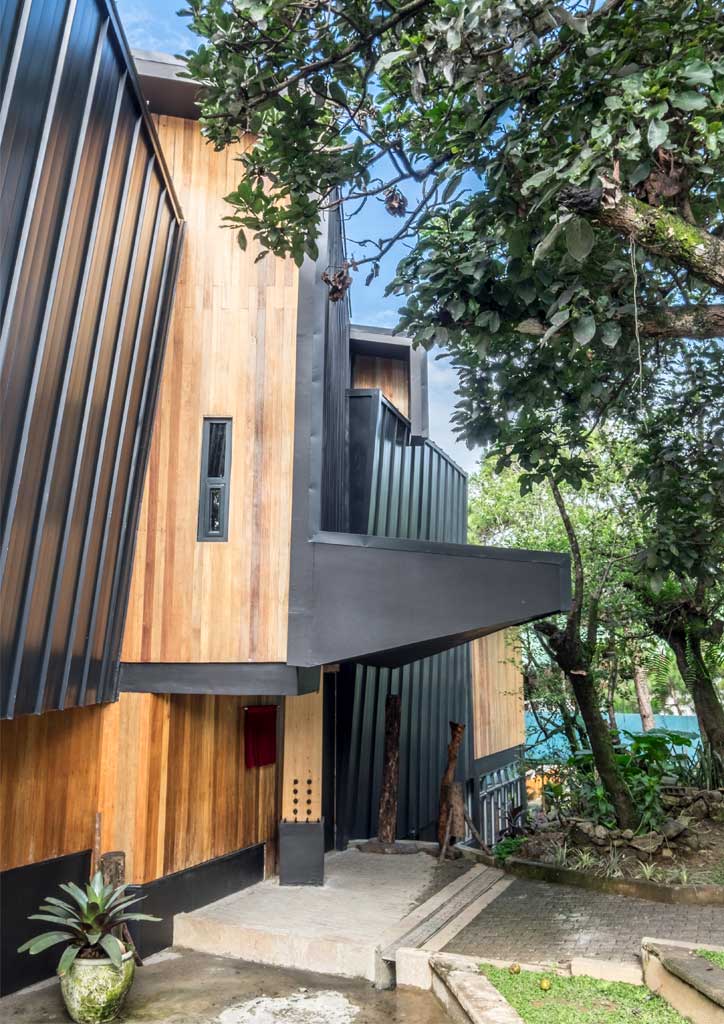
Negotiating an approximately 4.5-meter site level change, the new irregular ramp is composed so that people can either go from top to bottom directly, take a longer winding route, or linger on its timber-deck steps, which also serve as seating. The architects have found, however, that it has taken some time for campus users to use it as it was intended. “People are not so used to having open space here,” comments Go. The black-painted walls inscribing the open space were also left as a blank canvas for the members of the adjacent CAC building to adorn with paintings or use as a backdrop for installations. As of yet, the faculties have yet to discover the potential of this space as something more than just a variegated way of getting from A to B.
READ MORE: UP Manila Museum of a History of Ideas houses the intangible
Common to almost all of 90 Design Studio’s projects is the use of timber, not only as a means of reducing a building’s environmental impact, but also to express the intimate, age-old relationship the Cordilleran community has with it. This familiarity comes in the form of a primary upper structure of glued laminated timber, or glulam—a material two-thirds the weight of steel and one-sixth the weight of concrete, while also possessing six times less the embodied energy needed to produce it than the same corresponding strength of steel. The structure takes full advantage of glulam’s capability of spanning large distances without requiring intermediate structural support, offering the architects flexibility in the way they could plan space below. Adding to the grain and tactility of the amphitheater is an interior completely lined in timber slats. As the architects reiterate, timber has a “historical resonance among the local people who have, for a long time in the past, been surrounded with timber in their houses, public places, and in ritual.” Here, timber is celebrated.

Since opening, the 120-capacity theater has already hosted a soprano concert, chamber music performances, conferences, and lectures. The soprano complimented the balance of the acoustics in the amphitheater; the strategy here was to absorb as much sound as possible to simulate the aural environment outdoors. Despite Go specifying for insulation to be inserted in all areas between the inner and outer skins to achieve this, the upper portions of the walls were not filled. The abundance of timber maintains the directness of sound across the space. While this doesn’t detract from the acoustic conditions for the performances themselves, low-frequency noise seeping in from vehicles buzzing along Governor Pack Road is now apparent.

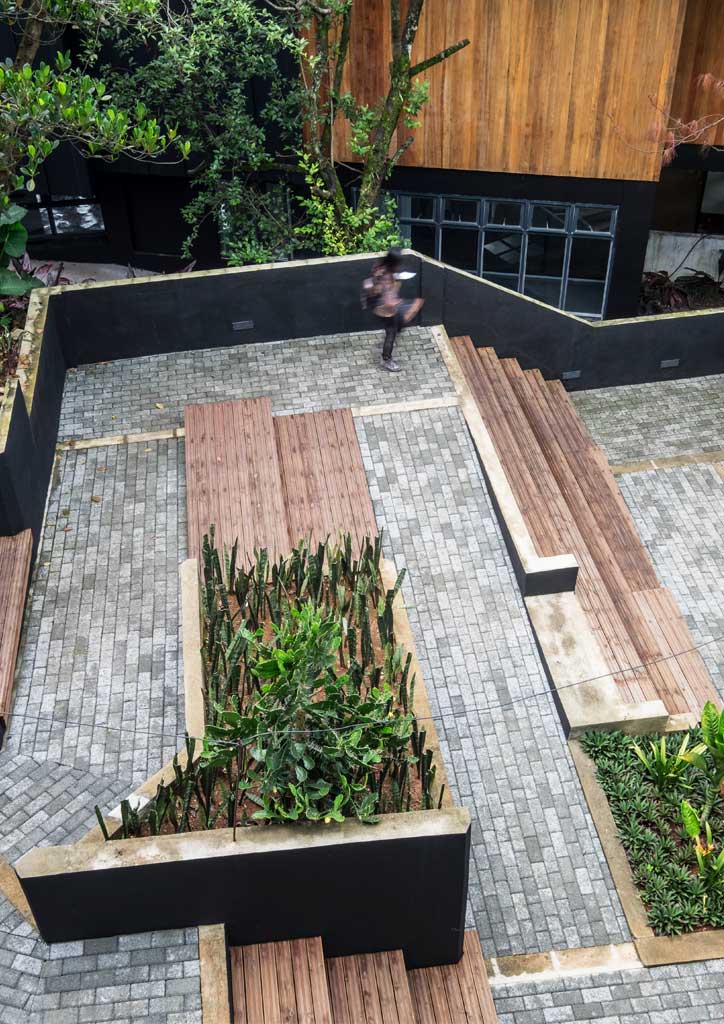
As part of the architect’s spatial programming to encourage more interaction between departments, the activities relating to the adjoining CAC building continues in the space beneath the amphitheater. The reinforced concrete substructure propping up the timber structure above also houses a daylight-lit art gallery. The rising ceiling, owing to the amphitheater form, prevents this space from feeling like an afterthought and rather allows the free plan space to breathe as a place in its own right.
READ MORE: Art Deco Laperal Apartments retrofitted, now a student dorm
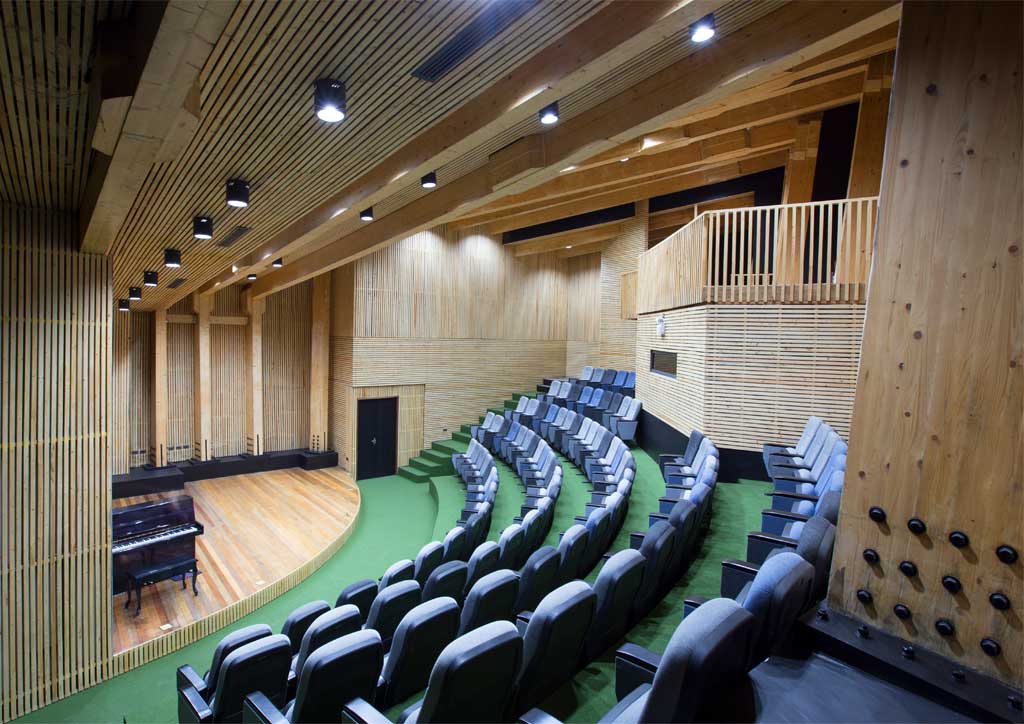
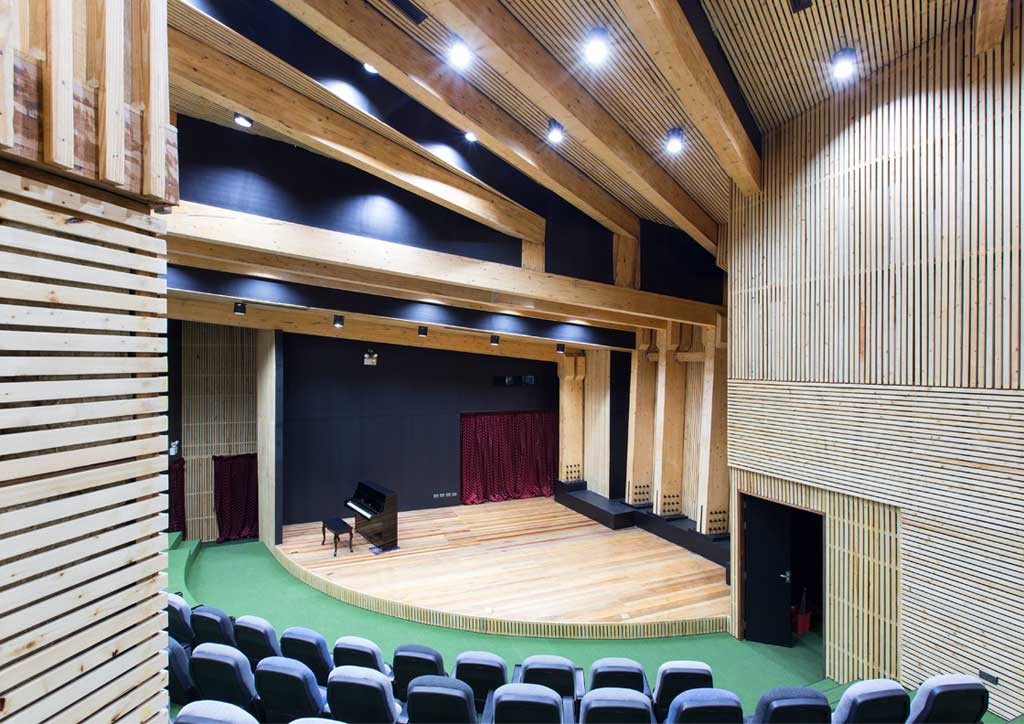
The process of building the theater, explains Go, was as constant navigation through compromises as the number of turns you need to take to get to any faculty building on the campus. Notwithstanding the discrepancies—large dimensional discrepancies between the plan and built structure, and completely changing the glulam beam connections and base column details without the architect’s consent, to name but two major ones—the architects have elevated the quality of spaces needed for new cultural expression in the Summer Capital of the Philippines.
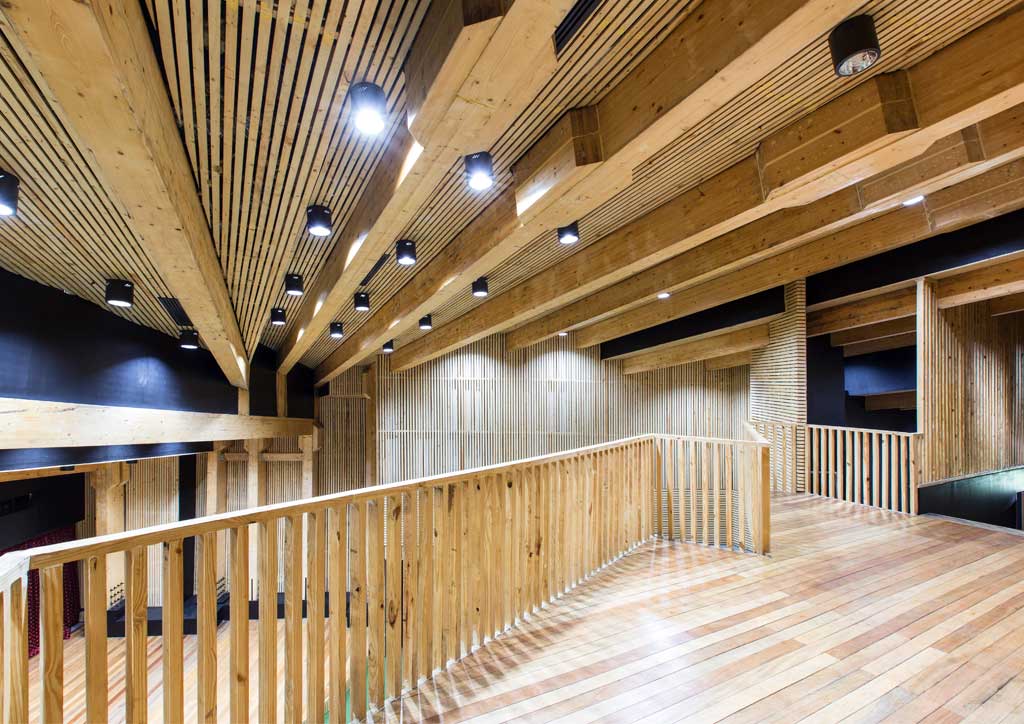
In handling the dichotomy between their own informed, design-led recommendations and UP Baguio’s expectations, Go attributes the Chancellor’s support and gusto to “do something really new” for the success of the project. With every new building that gets completed, 90 Design Studio has, step by step, gained the trust of the UP Baguio board in evolving the campus into one bearing the hallmarks of a top-class contemporary institution. Buildings such as the Teatro Amianan demonstrate a confident step forward for the studio in becoming a fixture for the upcoming works to be completed in achieving this overall vision.![]()
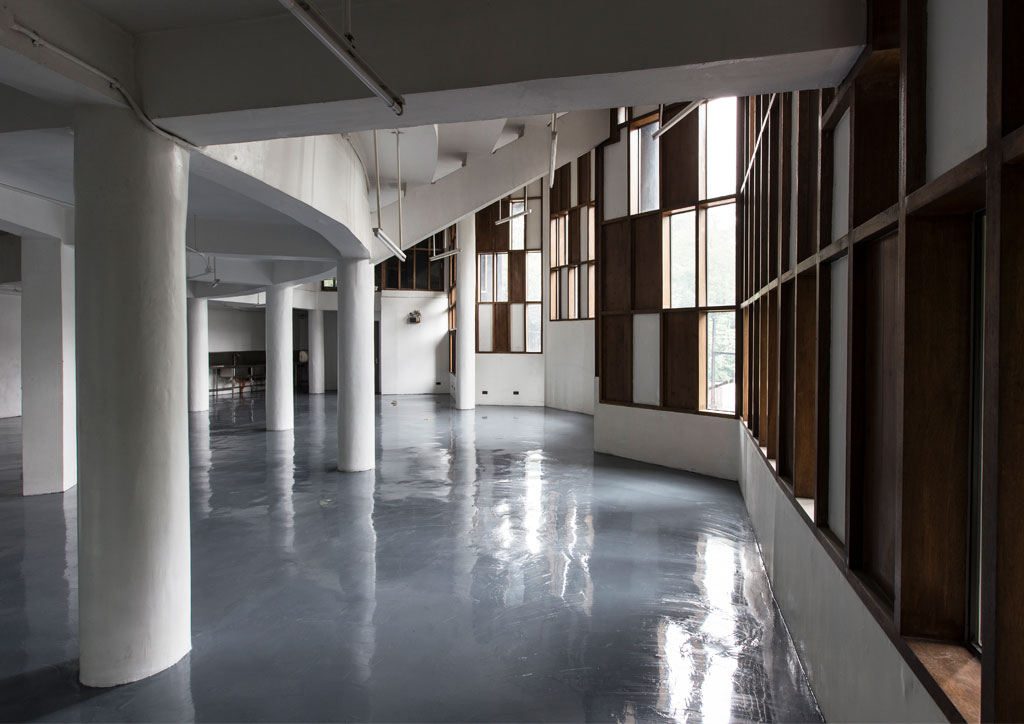
This article was first published in BluPrint Volume 3 2018. Edits were made for BluPrint online.
Photographed by Ed Simon
READ MORE: SHAU’s Microlibrary Bima is composed of 2000 upcycled ice cream buckets


